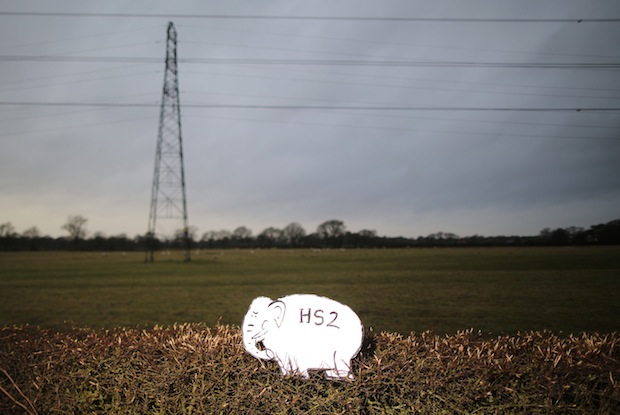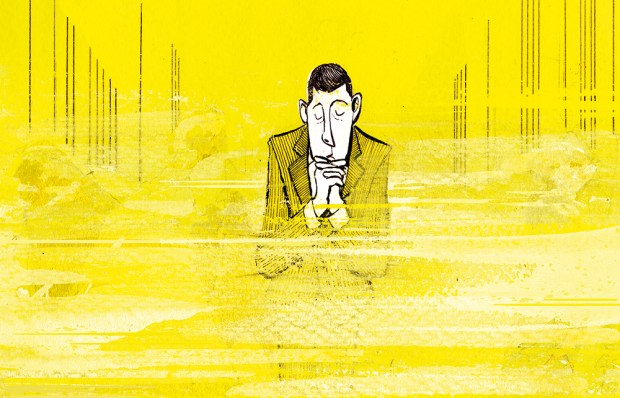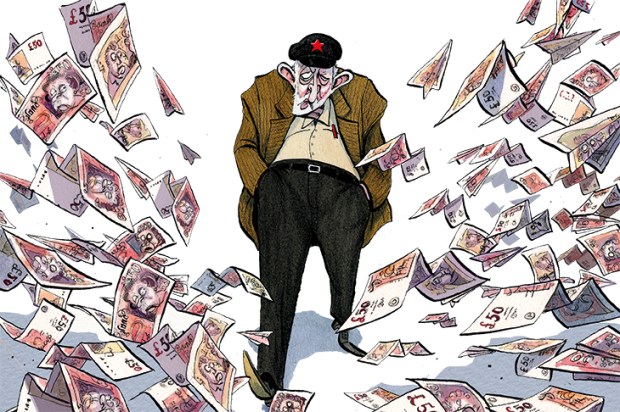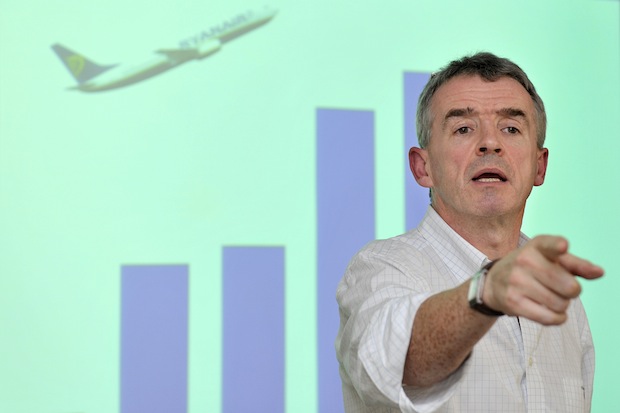In June last year I predicted in these pages that the government would allow High Speed 2 to die a quiet death. Although the government has since reaffirmed its commitment to the proposed railway line, I am sticking to my prediction. Indeed, if the line is ever built I will book a ticket on the first train out of Euston and consume my hat in the dining car.
How can I be so sure? Because the projected costs of the project are now so ridiculous that it cannot possibly go ahead. Even before George Osborne, in his spending review in June, added another £8 billion to the estimate cost of HS2, the project had a feeble and a deeply flawed benefit-to-cost ratio of 1.4:1. As a suppressed Department for Transport report, finally disclosed in a freedom of information report last summer, made clear, most of the supposed benefits of HS2 are based on the false assumption that businessmen do not use their time sitting on trains productively. But with the new costings even the flawed benefit-cost ratio falls to just above one: the level at which the cost to the public purse equals the forecast benefit to the economy. And that is assuming that you believe the new costings. Many do not. This week the Institute for Economic Affairs published an analysis which, including all the related projects required to make HS2 function, such as another Crossrail from Euston, brings the project to close to £80 billion. The record of HS1 (the Eurostar line through Kent) does not bode well: in 1985, when first proposed by British Rail, it was costed at £1 billion at current prices. It eventually cost £11 billion.
The National Audit Office, too, is deeply sceptical about the justification for HS2. It produced a scathing report in May attacking the ‘lack of clarity’ about the objectives of the project. The government immediately dismissed the report as ‘out of date’ (which it was only to the extent that George Osborne’s upwards-revised costings had not been published). For a government committed to eliminating the deficit — which preaches austerity on virtually every other area of government spending — it was an astonishing attitude.
Just why are high-speed railways allowed to break every rule in the fiscal book? In a report on transport investment policy for the then Labour government in 2006, Sir Rod Eddington caught it perfectly. ‘The risk is that transport policy can become the pursuit of icons,’ he wrote. ‘Almost invariably such projects — “grands projets” — develop real momentum, driven by strong lobbying. The momentum can make such projects difficult -— and unpopular — to stop, even when the benefit-cost equation does not stack up, or the environmental and landscape impacts are unacceptable.’
It is a conclusion at which other countries are gradually arriving, having themselves invested billions in high-speed rail. Last month the Hollande government cancelled a planned TGV line from Paris to Nice, declaring that the money would be better invested in existing railways, whose poor condition was soon afterwards highlighted by a crash caused by badly maintained rails in the Parisian suburbs. The Spanish high-speed rail system has failed to attract anything like the passenger numbers predicted. The economic case for a proposed line from San Francisco to Los Angeles has been undermined as costs have grown and the planned sections of the line have been chopped, so that it is now unlikely to happen.
You only have to ask yourself: why has there never been an entirely privately funded high-speed rail project? Even by the standards of high-speed rail, HS2 is extravagant. French railways spent £22 million per mile on the high speed line from Paris to Strasbourg, which opened in 2007. The Frankfurt to Cologne line cost £60 million per mile and HS1 £80 million per mile. Yet at the latest costings of £42 billion, HS2 will work out at £121 million per mile. The extra cost is partly down to the higher population density of the English countryside, which requires more expense in compulsory purchase orders, but partly because it has been over-engineered. High-speed lines in France and most European countries run to an operating speed of 190 mph. HS2, by contrast, has been designed to 225mph, adding significant costs since the curves must be significantly less sharp.
While TGV trains into Paris run on existing railway lines, the plans for HS2 involve lengthy tunnelling beneath London and the rebuilding of Euston station.
It is as if the government has said to itself: ‘Look, we were late on to the high-speed rail bandwagon. Let’s make up for it by building a line that is even faster.’ It ignores the fact that British cities are packed more closely than those in France, German and Spain and therefore do not require such rapid trains to get their inter-city journey times to below the three hours or so at which rail becomes competitive with air travel.
That HS2 seems to have persisted is a symptom of how insular our politicians have become. HS2 will only ‘transform’ the geography of Britain if you live the lifestyle of a government minister or senior civil servant. If you are based in London and need to make occasional forays to our half-dozen largest cities, it genuinely will transform your working life. George Osborne, who is the government’s biggest cheerleader for the project, will be able to buzz backwards and forwards to his Cheshire constituency with ease. He won’t even suffer the wrath of constituents — thanks to a £600 million detour, the proposed line will bypass the affluent towns of Knutsford and Wilmslow.
But what does HS2 have to offer Doncaster, Stoke-on-Trent, Coventry and other towns that have good rail services now but will be bypassed by the new line? Never mind the nimbys of the Chilterns, who have had far too loud a voice in the HS2 debate; just watch the protests of dozens of towns and cities in the Midlands and the north when they learn they will lose rapid, direct services to London.
Anyone reading the above might come to the conclusion that I don’t like trains. Actually, the opposite is true. There is no finer way to travel. I feel childishly excited even at the sight of an inter-city train. But the figures, I am afraid, are compelling. I cannot understand why George Osborne and other senior figures in the coalition did not, when presented with the plans for HS2, say to the promoters: ‘That looks wonderful. Now go away and come back when you have worked out how to do it at a third of the price, whether by cutting the speed, doing without the tunnelling, having fewer fancy stations or whatever.’
Their failure to challenge the costs at the outset will ultimately doom the project. It will prove impossible, even in a nation of train-lovers.
Got something to add? Join the discussion and comment below.
Get 10 issues for just $10
Subscribe to The Spectator Australia today for the next 10 magazine issues, plus full online access, for just $10.
You might disagree with half of it, but you’ll enjoy reading all of it. Try your first month for free, then just $2 a week for the remainder of your first year.















Comments
Don't miss out
Join the conversation with other Spectator Australia readers. Subscribe to leave a comment.
SUBSCRIBEAlready a subscriber? Log in